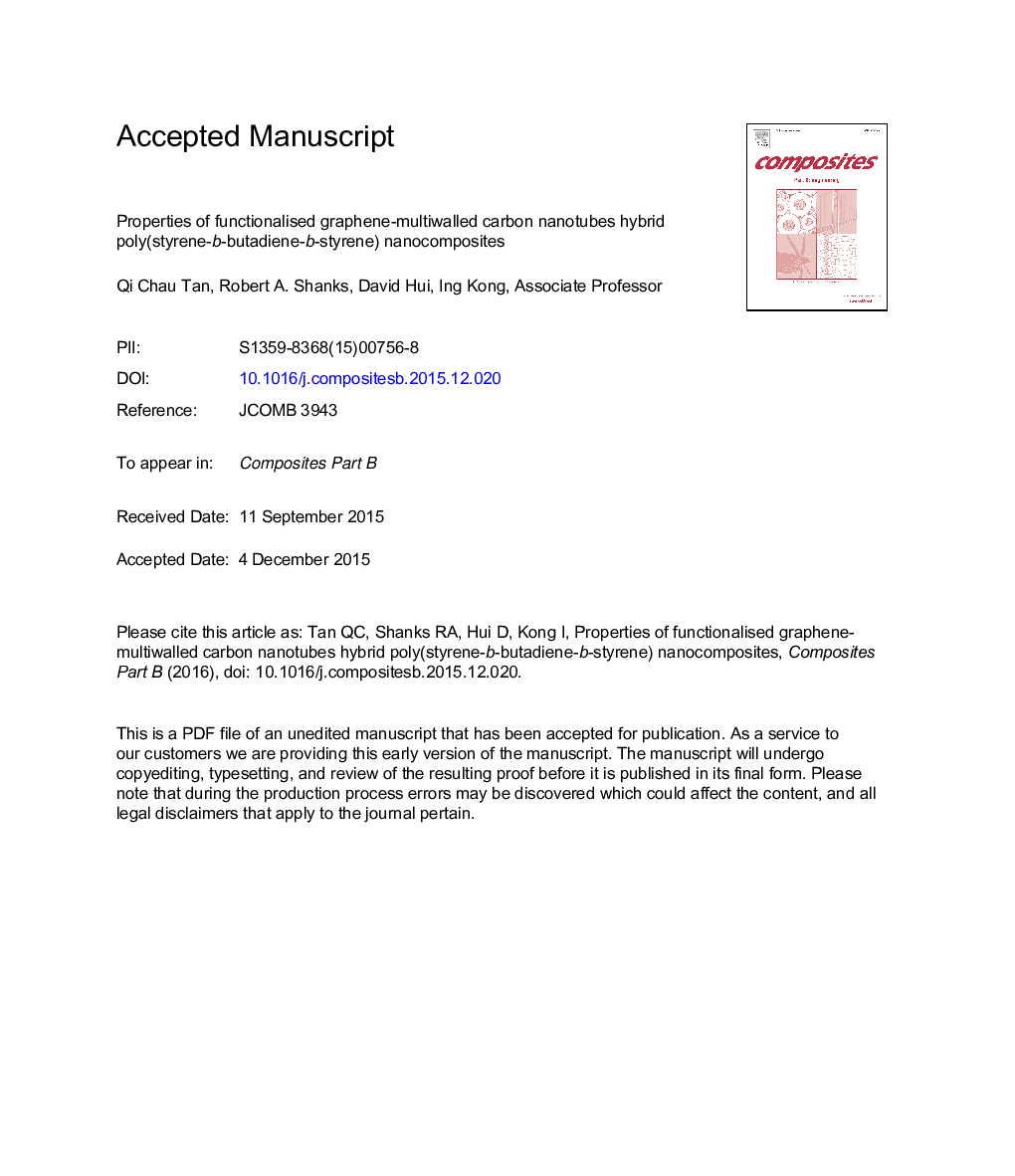| Article ID | Journal | Published Year | Pages | File Type |
|---|---|---|---|---|
| 7212904 | Composites Part B: Engineering | 2016 | 50 Pages |
Abstract
Combinations of functionalised graphene (fG) and functionalised multiwalled carbon nanotubes (fMWCNT) were dispersed into poly(styrene-b-butadiene-b-styrene) (SBS) matrix, where the ratios of individual fillers were varied in each nanocomposite. The synthesis of fG started from thermal expansion of expandable graphite (EG), followed by modified Hummer's method to produce graphene oxide (GO), and functionalisation of GO with 1-bromobutane (C4H9Br). The resultant fG displayed stable and strong compatibility to non-polar organic solvents. The polymer nanocomposites were prepared and characterised for their morphology, thermal stability, mechanical properties and electrical conductivity. Polymer nanocomposites with hybrid nanofillers showed improvement in thermal and electrical properties than their single nanofiller counterparts. Both the properties have maximum improvement with same weight ratios of fG and fMWCNT, with each 1.5%·w/w in SBS matrix. For mechanical properties, the improvement depends on the dominance of nanofiller. For the hybrid nanofillers, fG improved the elastic behaviour of SBS, while fMWCNT gave the overall stiffness.
Keywords
Related Topics
Physical Sciences and Engineering
Engineering
Engineering (General)
Authors
Qi Chau Tan, Robert A. Shanks, David Hui, Ing Kong,
